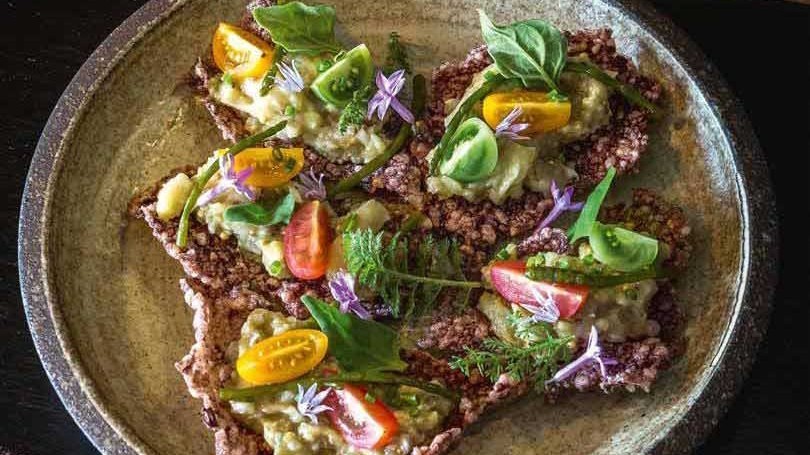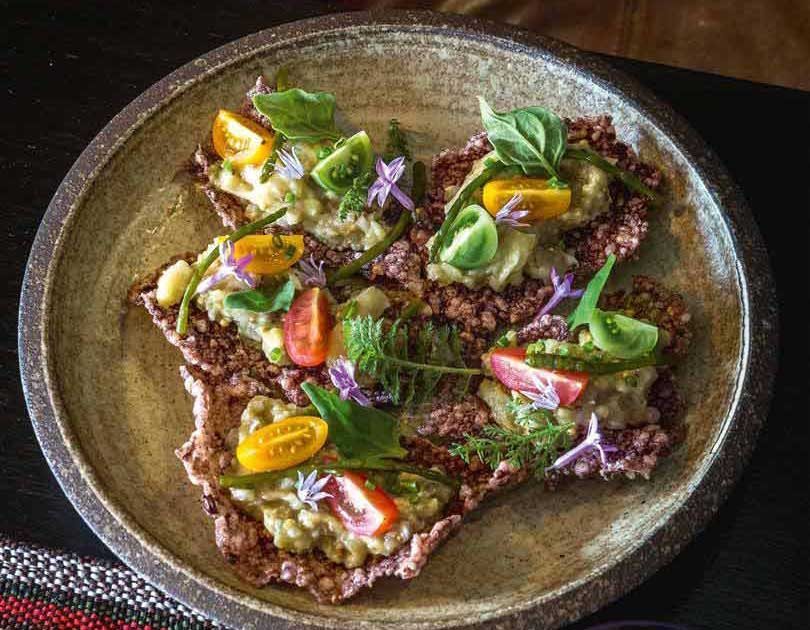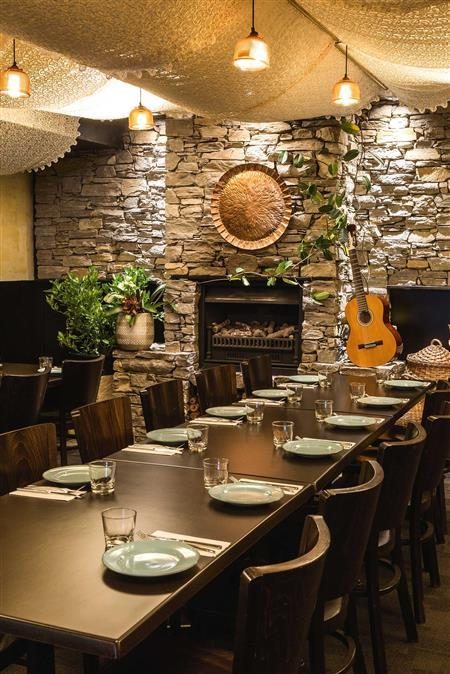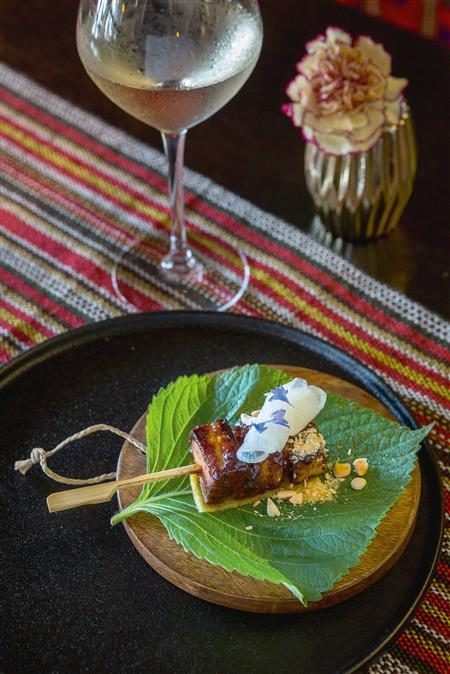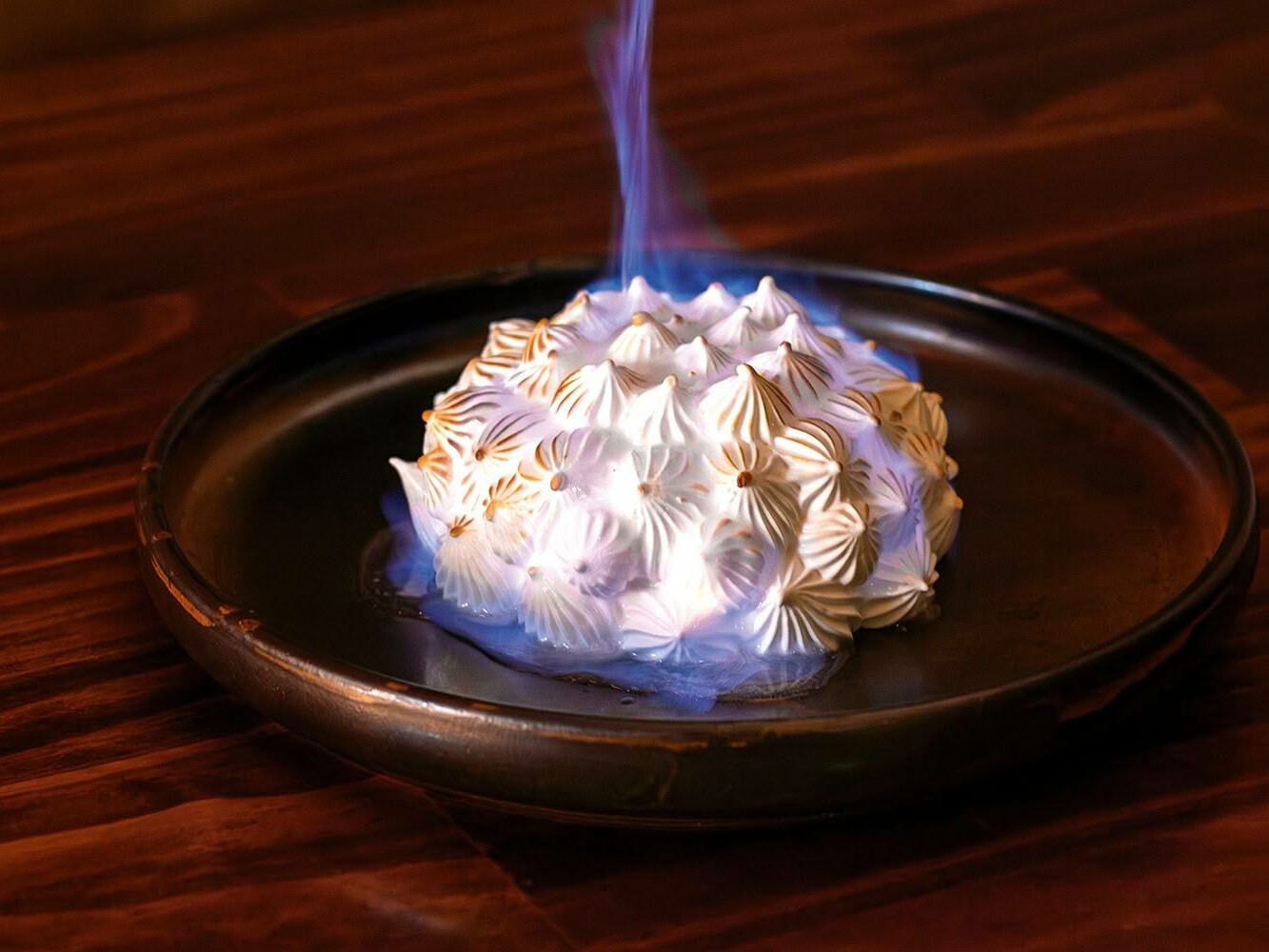Filipino food has never been a regular on my eating pathway but as it happens, I have visited Nanam before. It lived in Royal Oak then and I recall it being packed, a casual place with an upbeat, family-friendly vibe. At the time there was talk that it had the potential to become the new go-to eating house for those searching for an alternative taste of Asia beyond the more widely available Thai and Vietnamese haunts on offer.
Fast forward to late 2017 and I find myself once again at Nanam, this time in Takapuna. What a difference. It’s gone all upmarket. An expensive-looking fit-out with gold-coloured walls, an artsy hanging cane-and-bamboo extravaganza above a padded and buttoned bar, private dining room and confidently placed bric-a-brac combine to provide an air of opulence and carefully manicured style intended, I’ve read, to evoke the myriad cultural influences that pervade the food of the Philippines. Gone for sure is the relaxed vibe. Gone is the sense of a newly discovered little treasure. Not a hint of street food or casual cuisine here.
Some important elements have remained constant. Nanam is still owned by chef Andrew Soriano and his partner and fellow chef Jessabel Granada. Their website names a key third member of the trio as Andrew’s brother Ryan Soriano, also a chef.
Sadly, the experience this time around was underwhelming and could not be salvaged by the inclusion of an expansive drinks list that includes exotic-tasting cocktails and a couple of French waiters who, while pleasant, knew very little about what they were serving.
The menu is said to be interpretive of “classic Filipino dishes” but for the most part we found it lacklustre. The ensaymada, a form of brioche with Havarti cheese and shaved macadamia, was overly sweet, especially for a starter, while the smoked eggplant or ensaladang talong was texturally interesting but bland. The taco pao, a Nanam signature dish with beetroot bao (bun) and humba pulled pork that you cobble together with various sweet and sour condiments, had little flavour depth.
Among the larger dishes, while munggo at baboy or pork belly was delicately cooked, it badly needed seasoning. Two dishes that rated above the rest were a tasty binagoongan, a dish of crispy herb-marinated fish, but with a caramel-based sauce, it was again overly sweet. The other was an appealing assemblage of ukoy, grilled tiger prawns that had all the sour and spice we were expecting.
I particularly enjoy the complexities of Asian food, but this menu left me wondering if I was missing something. So I made a return visit, a couple of weeks later, after some research into what distinguishes Filipino food and with a different dining partner so I could rule out the company as any negative influence.
For sake of comparison, I chose a couple of the same dishes, including the ones that rated more highly, and those we enjoyed least. When it arrived, after a very long wait, there were pleasant surprises, disappointments and confirmations. The ukoy we had enjoyed so much on the previous visit was a shadow of its former self, a small portion of overcooked, tepid prawns that lacked crispness and had oily deep-fryer remnants scattered over the top and an unpleasant grittiness in the salad beneath.
The roast chicken sinigang was once again moist and tender but lacking the punch of the promised tamarind spice rub. The watercress tomato salsa underneath also lacked any depth, rendering the dish bland.
On the upside, the Bbq-han grilled pork belly with fermented pineapple glaze and cucumber salad was mouth-wateringly good, and the caldereta of braised beef cheek with paprika and red pepper caldereta sauce was superb, perfectly seasoned and with finely balanced hints of sweetness and piquancy.
The dessert menu at Nanam comprises three choices, the pick of the bunch being the Ovaltine, a nicely presented plate of chocolate textures.
The attempt to create a more cosmopolitan experience and a clear commitment to local ingredients such as New Zealand clams and Kelmarna greens is laudable, and the success of the Bbq-han and caldereta delivered a more satisfying second visit. But there remains too little light and shade and an overly sweet slant to most dishes to warrant a must-visit recommendation. Nanam is pricey, and for me it has ventured too far away from the traditional and too far into the interpretative to draw me into its particular exploration of Filipino food.
ADDRESS: 178 Hurstmere Rd, Takapuna
LUNCH: Tues – Sat
DINNER: Tues – Sat
MAINS: $26 – $32
WEBSITE: nanamrepublic.co.nz
SCORE: 13.5 / 20

